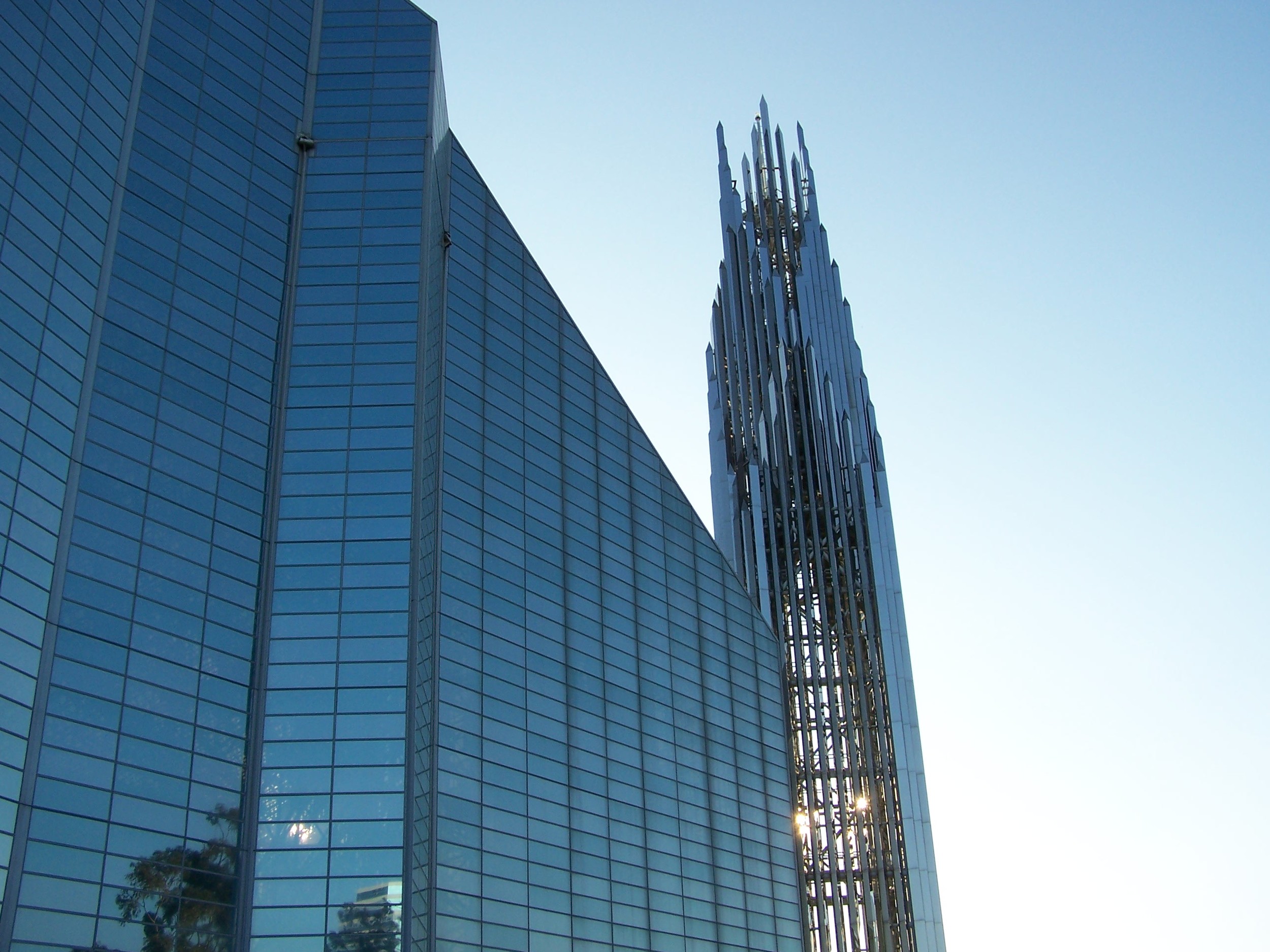 Back in the mid-1980s, the booming world of Evangelical cable television endured a round of scandals that reporters dubbed "Pearlygate," which kicked off with the fall of the Rev. Jim Bakker.
Naturally, all kinds of editors woke up and started paying attention to TV preachers. It was in that context that, while covering religion for the Rocky Mountain News, I was shipped off to Orange County, Calif., to try to find out where the Rev. Robert H. Schuller and his "Hour of Power" broadcasts fit into this picture.
Back in the mid-1980s, the booming world of Evangelical cable television endured a round of scandals that reporters dubbed "Pearlygate," which kicked off with the fall of the Rev. Jim Bakker.
Naturally, all kinds of editors woke up and started paying attention to TV preachers. It was in that context that, while covering religion for the Rocky Mountain News, I was shipped off to Orange County, Calif., to try to find out where the Rev. Robert H. Schuller and his "Hour of Power" broadcasts fit into this picture.
The answer, of course, was that he didn't fit into the picture at all.
With his flowing semi-academic vestments and his love of grand theatrics, Sculler was actually serving up something so familiar that people missed what he was doing. In his own way, he was offering a kind of 1950s mainline Protestantism on steroids, a showy update on the Rev. Norman Vincent Peale for the era of the super-suburbs.
In short, he was the sort-of evangelical superstar who was never really trusted by the evangelical world. Many simply called him New Age and moved on.
Anyone who paid close attention to what he was saying could see that, sooner or later, this formula was going to break down. The old mainline was heading further to the cultural and doctrinal left and evangelicalism -- other than, perhaps, the Rev. Joel Osteen -- didn't want to explore the same post-doctrinal terrain as Schuller.
Now, of course, Schuller's own children are divided and the Crystal Cathedral has gone bankrupt.
It appears that the split is between a more standardized megachurch Evangelicalism and Schuller's old neo-mainline formula. It's hard to tell what is happening from the coverage in the Los Angeles Times, which has been stunningly uninterested in any aspect of this story other than family politics and disputes over sexual politics in the music ministry. Who is in those pews right now?
But how's this for irony? Now there is a chance that Schuller's post-denominational cathedral for those seeking Christian doctrine lite may actually turn into a real, live cathedral -- with a bishop. Check this out:
A new and intriguing prospect for the Crystal Cathedral emerged Wednesday when the Roman Catholic Diocese of Orange said it was considering buying the bankrupt church in Garden Grove and converting it to a Catholic cathedral.
The announcement by Orange Bishop Tod Brown came one day after Chapman University made a $46-million bid for the 40-acre site. The Crystal Cathedral had earlier reached a tentative agreement for a sale and lease-back deal with a real estate developer, subject to approval by U.S. Bankruptcy Court Judge Robert Kwan.
A sale to the Catholic Church would solve a longstanding problem for the Orange Diocese, which has no central cathedral for its 1.2-million parishioners. It has been planning for more than a decade to build a new, 2,500-seat cathedral in Santa Ana, but has gotten only as far as hiring an architect. The Crystal Cathedral, designed by the late Philip Johnson, would provide an instant, 3,000-seat architectural landmark at roughly half the $100 million that was previously estimated for the Santa Ana project.
That would be interesting and, yes, symbolic.
However, it is in this context that the Times team tried to paint this change in rather broad, symplistic doctrinal strokes. Read carefully.
A sale to the diocese would be rich with symbolism. Schuller built the Crystal Cathedral as the physical expression of a Space Age ministry that eschewed orthodoxy in favor of a casual worship style and the self-help spirit of "possibility thinking." It stood in sharp contrast to the sort of dogma and ritual practiced by the Catholic Church.
What, pray tell, does it mean that Schuller "eschewed orthodoxy"? In comparison to whom?
While it is true that he all but eliminated talk about dark subjects such as sin and repentance, in favor of a kind of positive pop theology, I am not aware that he actually tossed out the major doctrines of basic Christianity. He just saluted them meekly from time to time and then went his own way.
Like I said, Schuller offered a kind of 1950s mainline Protestantism and, the times I sat in his pews, that's who I saw around me -- old-fashioned Republican Protestants. You know, suburban winners. Did I miss something?
Also, his "casual worship style" was actually more formal and at times even liturgical in comparison with most of the pop-rock "contemporary Christian worship" that dominated the Baby Boomer evangelical era.
In short, has the Times decided that Schuller should now be seen as, well, a kind of emerging evangelical who was ahead of his time? He is now, officially, no longer a scary evangelical TV guy?
Just asking. I always thought Schuller was so ordinary that he was interesting, a kind of mainline guy who skipped the 1960s and floated along his own path. He wasn't all that unorthodox and he was never a conservative anything, either. He was just, uh, shiny and light.
It will be amazing if that monument to suburban Protestantism actually turns into, well, a real cathedral. How ironic would that be? And what a complex and interesting story is taking place out there, right now. Now we just need someone to cover it.
